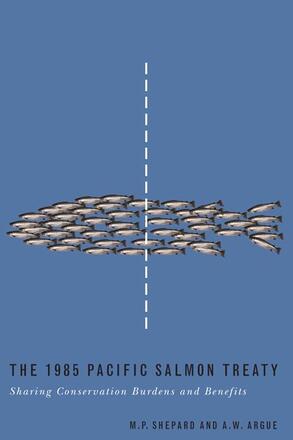
The 1985 Pacific Salmon Treaty
Sharing Conservation Burdens and Benefits
Description
For thousands of years, Pacific salmon have been the focus for the economic and social development of societies, both ancient and modern, around the rim of the North Pacific Ocean. After lengthy oceanic migrations, the salmon pass through coastal waters of Alaska, British Columbia, and the northwest United States in a final journey to spawn, where they form lucrative targets for Canadian and US fishermen.
Beginning late in the nineteenth century and culminating in the 1985 Pacific Salmon Treaty, Canada and the United States carried out long and contentious negotiations to provide a framework for cooperation for conserving and sharing the vitally important Pacific salmon resource. The 1985 Pacific Salmon Treaty traces the history of the tumultuous negotiations, providing an insider’s perspective on the many complex issues that were addressed. It concludes with a brief assessment of the treaty’s performance under the difficult economic and environmental circumstances that have prevailed in the fishery since 1985.
This incisive work, with its unique historical perspective, will be of great interest to the Canadian and United States fishing communities affected by the treaty, to the general public, politicians, and fisheries specialists in both countries concerned with stewardship of natural resources, and to scholars of international law and regional history.